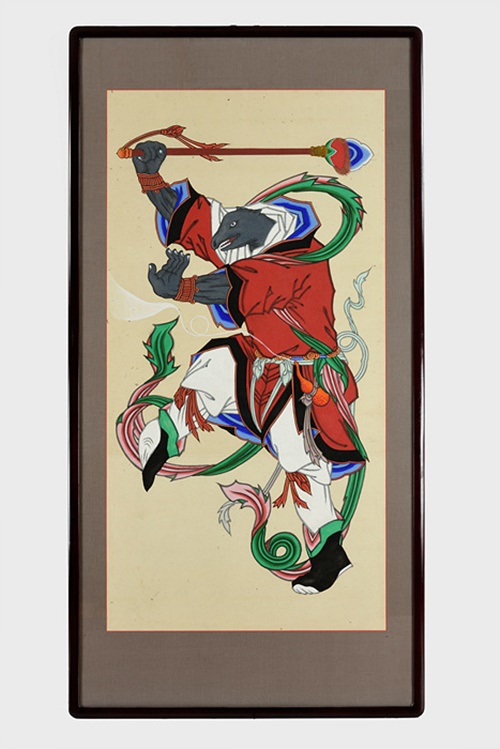
A painting of a rat warrior protecting Buddhism (National Folk Museum)
By Kang Gahui and Lee Jihae
On the first day of the new year, the mythical Jade Emperor is said to have gathered 12 animals to hold a race. He told them that he would name a year after each animal in the order they finished the competition.
The sly rat hung on to the horns of the hard-working ox, jumped to the finish line from the beast's horns and secured first place.
The Year of the Rat has returned this year according to the 12-year zodiac cycle of animal deities, with 2020 marking gyeongja (庚子) year in Korea. The character for gyeong means "white" and that for ja means "rat." The white rat is known as the wise leader of a pack.
So what do rats symbolize in traditional Korean folklore?
A quote from Samguksagi (Chronicles of the Three Kingdoms) says that in November of A.D. 769, the fifth year of Silla King Hyegong's reign, "Eight thousand rats migrated from Chiak-hyeon of Gangwon-do Province to Pyeongyang. It did not snow." This migration indicates that the rats predicted a famine the next year.
The rodent also prominently figures in Korean proverbs as having the ability to predict danger. One maxim says "A ship will sink if there are no rats in it" while another goes "If rats cause a ruckus in the ceiling, misfortune will befall the household."
The tendency of rats to multiply made the animal a symbol of fertility and wealth. In the old days, Koreans made talismans with the character for seo (鼠), which means "rat," when wishing for a good harvest. They believed that if they dreamed of catching a white rat, it was a sign of impending wealth and luck.
In Korea, the rodent is known to protect property since it diligently moves around seeking food, thus it has come to symbolize perseverance and concentration.
The National Folk Museum through March 1 will host the free exhibition "Even a Rat Has its Day," highlighting the animal's significance and symbolism in Korean history and lore. More information is available on the museum's website.
http://www.nfm.go.kr/english/index.do
kgh89@korea.kr